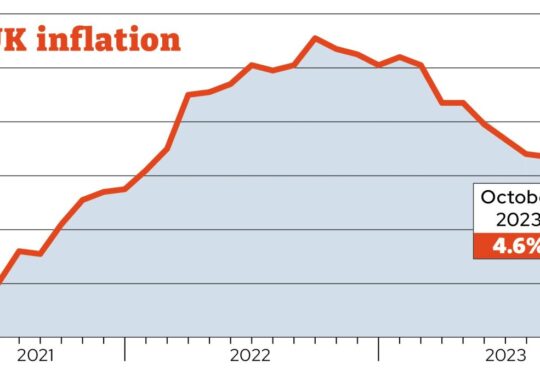

- Millions of 32-40 year olds auto-enrolled into their default pension scheme are likely to be “triple defaulters” – never updating their contributions, investment choices, or target retirement age.1
- Even small changes to “defaults” could boost pension funds at retirement by thousands of pounds.2/3
- Only one in five (19%) are ‘completely’ or ‘somewhat’ prepared in how they will fund their retirement.2/3
- Aviva calls on government and regulators to remove regulatory barriers to allow providers to deliver more effective support for those retiring in the 2050s, such as personalised guidance.2/3
The potential impact of making small changes to the default pension choices could be significant. For example:
- If typical defined contribution (DC) savers put an extra 2% of income into their pension from age 22, this could increase their total pot on retirement by £56,000 (25%).2/3
- If the same saver worked for an extra two years, this could increase the total pot size on retirement by nearly £19,000 (9%).2/3
- And, if they could secure a 1% higher rate of return on their fund, this could deliver an additional £57,000. 2/3
More than half of those on middle incomes due to retire in the 2050s – many of whom are likely to be triple defaulters [with default contribution levels, default investments, and a default retirement age] – have either never heard of, or know anything about their retirement options ; 6% think they would need less than £15,000 a year to achieve a minimum standard of living in retirement 2/3 and nearly one in ten (9%) say that they would take their whole pension pot as cash at retirement, leaving them with the possibility of a large tax bill and a substantial risk that they will run out of money in later life 2/3. Overall, this lack of knowledge and understanding feeds directly into their savings decisions and explains why only one in five (19%) feel prepared in terms of how they will fund their retirement.
Key to supporting this group will be the transformation of professional advice in the UK, such as introducing simplified and hybrid advice for defined contribution pensions. In its report, Aviva calls for government to make advice work for this new mass-market by:
- Setting a policy ambition that the majority of DC savers (particularly those likely to have more than £200,000 to manage) will get professional advice.
- Focusing the current review of the advice framework6 on the measures needed to properly serve this new mass market.
- Easing regulatory barriers to allow providers and other regulated entities to deliver more effective support, such as personalised guidance.
Just one in ten (10%) of those on middle incomes retiring in the 2050s have taken professional advice2. This compares to nearly four in ten (37%) of the same group in the United States2. This lack of action is echoed by those who have already retired, with nearly six in ten (58%) people who have retired in the UK in the last ten years saying that they “wish they had known more when they were younger about their pension needs now” 2.
Emma Douglas, Director of Workplace Savings & Retirement at Aviva says: “Default strategies and settings will meet the needs of a wide range of investors – with different ages, backgrounds, and income levels – and, for many, they can be the right choice. By their very nature, default investment strategies are designed to do the ‘heavy lifting’ for you, putting the investment decisions in the hands of the experts. But we also know that while defaults are essential, making small active changes to your pension, particularly increasing contribution levels, can have a significant impact.”
Aviva’s ‘Planning for retirement in the 2050s’ looks at the challenges being faced by the first cohort of retirees likely to leave work without the safety net of any defined benefit pension income. The report reveals that millions of those retiring in 2050 will have accumulated significant DC savings to fund their retirement years. But, for the most part, this will be through saving via auto-enrolment through their employer, and not because of proactive engagement with their pensions.
This inertia poses two key challenges for future retirees:
First, someone aged 32-40 today, who earns a median salary throughout their career and who contributes the current auto-enrolment legal minimum of 8% into their pension (from age 22) could retire with a pension fund of around £225,000 (in today’s value) when they reach retirement in the 2050s 3/4. Although significant, this still falls short of what is needed to achieve a ‘moderate’ standard of living in retirement, according to the PLSA Retirement Living Standards5.
The second problem is that, because they are not proactively engaged, this cohort is highly likely to ‘set and forget’ their default choices around contribution levels, retirement age and investments, perhaps under the mistaken belief that this will be guaranteed to meet their retirement expectations. Facing complex decisions about how to make their money last throughout their retirement, most are also unlikely to be fully prepared to effectively manage this money without professional advice.
-Ends-
Media Enquiries:
Methodology:
The report presents a range of analysis of the challenges facing people saving for their pension and retiring in the UK. This includes results from an online survey of 3,000 adults aged 18 to 75 across the UK, which was conducted by Ipsos on behalf of Aviva. 2,000 adults aged 18 to 75 across the US were also surveyed to provide a comparison. Fieldwork was conducted in March 2023. Quotas were applied to ensure the sample was representative of each country on age, gender and region. Those set to retire in the 2050s are defined as aged between 32 and 40 years old, and ‘middle income’ is defined as those on a personal income of between £25,000 to £44,999 a year.
Sources:
1. Employee workplace pensions in the UK – Office for National Statistics
2. Report – ‘Planning for retirement in the 2050s’ – The cohort we focused on for this research are those earning £25k-£45k pa and who are likely to retire in the 2050s, and so will be aged between 32 and 40.
3. Ipsos: An online survey of 3000 adults aged 18 to 75 across the UK was conducted by Ipsos on behalf of Aviva. 2,000 adults aged 18 to 75 across the US were also surveyed to provide a comparison. Fieldwork was conducted in March 2023. Quotas were applied to ensure the sample was representative of each country on age, gender and region. Those set to retire in the 2050s are defined as aged between 32 and 40 years old, and ‘middle income’ is defined as those on a personal income of between £25,000 to £44,999 a year.
4. Aviva analysis of Department for Work & Pensions (DWP) data: Gov.uk | Mar 2023 | Analysis of future pension incomes
(*) WPI Economics extrapolation of internal Aviva analysis. Assumptions include:
- An individual has earned/ will earn a basic pay equal to median UK earnings for their age, adjusted for wage inflation of 2.5%
- The individual joins their company pension at age 22 and contributes without interruption to age 67
- Contributions are 8% of basic pay
- Investment returns are 2.5% above inflation
- Price inflation is 2.5%
- Projected fund is shown as today’s value
5. Pensions and Lifetime Savings Association | 2022 | How to estimate likely retirement living standards
6. Financial Conduct Authority (FCA) | Mar 2023 | The new simplified advice regime and the advice / guidance boundary review
7. In 2021, the workplace pension participation rate in the UK was at 79% (22.6 million employees) | Employee workplace pensions in the UK: 2021 provisional and 2020 final results






